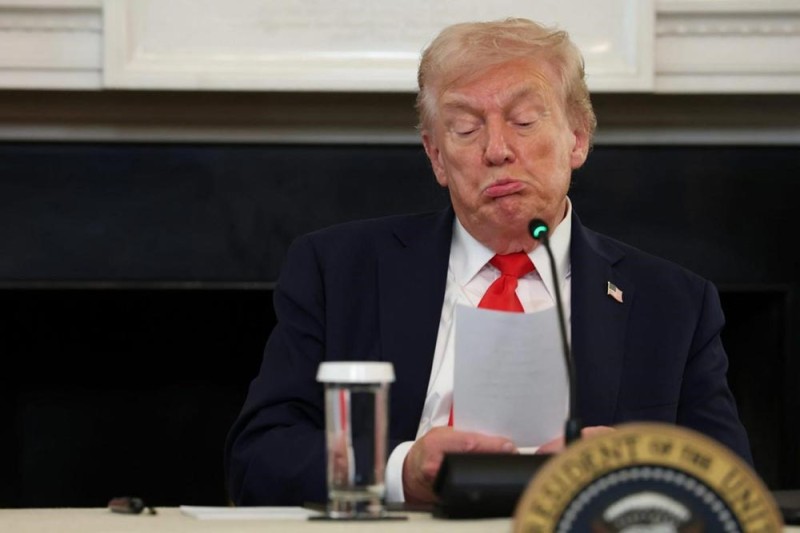
位于华盛顿特区的知名无党派预算监督机构联邦预算问责委员会(Committee for a Responsible Federal Budget,CRFB)对近期政府停摆行为进行了严厉批评,称其“毫无意义且浪费公帑”,同时披露2025财年联邦赤字高达1.8万亿美元,数额惊人。据国会预算办公室(Congressional Budget Office,CBO)在《月度预算评估》中报告所述,这一财政缺口反映了在政治僵局背景下对国家财政路径的持续担忧。值此消息披露之际,美国总统唐纳德·特朗普正鼓吹以快速经济增长和关税驱动刺激计划,作为解决美国37.8万亿美元债务(且仍在持续膨胀)的方案,而多数经济学家警告称,这些关税实际上相当于对消费者或资本征税。
联邦预算问责委员会主席玛雅·麦吉尼亚斯表示,政府本财年预估借款规模虽未增长,但这正是令人担忧之处。“尽管赤字较去年没有上升,但也未下降,而且我们仍在过度举债。美国的国家债务规模已与整体经济规模相当,并且债务的经济占比将很快超过二战后创下的历史最高纪录。”麦吉尼亚斯指出,美国未来十年年均借款额预计将接近2万亿美元。“谁会认为这种状况是可以持续的呢?”
该监督机构呼吁,当务之急是重启政府运作且不附加新的借款条款。此外,联邦预算问责委员会呼吁延续过去两年有助于控制支出的可自由支配支出上限,并建议实施“超级现收现付”规则,即要求每新增1美元的支出或减税项目,都需要相应地提供2美元的抵消资金,以强化财政责任。
麦吉尼亚斯还强调亟需解决长期权益项目偿付能力危机,特别是联邦医疗保险(Medicare)和社会保障信托基金。若无改革措施,这些基金约在七年内就会面临资金枯竭。为树立财政纪律,联邦预算问责委员会提议设立财政委员会,负责将赤字降至GDP的3%。鉴于当前债务趋势,这是一个雄心勃勃的目标,但也是必要之举。
麦吉尼亚斯断言:“我们正在目睹的治理失败悲剧”在于政治领袖始终未能超越分歧以完成必要的艰难预算编制工作。她警告称,若不做出改变,美国可能丧失其全球超级大国地位。
上一财年的1.8万亿美元赤字反映出,在医疗保健、社会项目和国防开支攀升,以及限制收入增长的税收政策(即不愿增税)背景下,平衡收支面临持续挑战。联邦预算问责委员会分析得出的结论值得警惕,强调了国会两党亟需合作制定可持续财政政策的紧迫性。
达利欧的诊断
联邦预算问责委员会远非唯一对赤字感到担忧的机构,金融界诸多权威人士长期敦促政府整顿财政秩序。其中最引人注目的当属对冲基金亿万富翁瑞·达利欧。他始终对特朗普总统所谓通过“创纪录增长”就能基本消除37万亿美元债务的主张持怀疑态度。
这位桥水基金(Bridgewater Associates)创始人研究了近50个重大债务周期,警告称债务增长驱动的繁荣始终是昙花一现。在其2018年著作《应对重大债务危机的原则》(Principles for Navigating Big Debt Crises)中,达利欧提醒人们,决策者常误将繁荣视作免受危机影响的保障,而收入增长速度必须持续超越债务偿付成本的增长速度。当前国会预算办公室实际预测,到2035年公众持有的债务将膨胀至118%,而净利息支出占经济产出比重也将持续攀升。
近日谈及黄金在2025年接连创下历史新高时,达利欧表示结合债务状况观察便不难理解此现象。在10月的格林威治经济论坛(Greenwich Economic Forum)上,他建议投资者将15%的投资组合配置黄金,指出金价飙升反映了投资趋势从债务资产和法定货币转向的趋势,这令他联想到20世纪70年代的场景。他将此与全球债务水平攀升(特别是美国37.8万亿美元债务负担)相联系,并指出多国央行正在增加黄金储备,这凸显出“货币秩序正在发生变化”。
《财富》杂志使用生成式AI辅助完成本文的初稿。编辑在发表前已核实信息的准确性。(*)
译者:刘进龙
审校:汪皓
位于华盛顿特区的知名无党派预算监督机构联邦预算问责委员会(Committee for a Responsible Federal Budget,CRFB)对近期政府停摆行为进行了严厉批评,称其“毫无意义且浪费公帑”,同时披露2025财年联邦赤字高达1.8万亿美元,数额惊人。据国会预算办公室(Congressional Budget Office,CBO)在《月度预算评估》中报告所述,这一财政缺口反映了在政治僵局背景下对国家财政路径的持续担忧。值此消息披露之际,美国总统唐纳德·特朗普正鼓吹以快速经济增长和关税驱动刺激计划,作为解决美国37.8万亿美元债务(且仍在持续膨胀)的方案,而多数经济学家警告称,这些关税实际上相当于对消费者或资本征税。
联邦预算问责委员会主席玛雅·麦吉尼亚斯表示,政府本财年预估借款规模虽未增长,但这正是令人担忧之处。“尽管赤字较去年没有上升,但也未下降,而且我们仍在过度举债。美国的国家债务规模已与整体经济规模相当,并且债务的经济占比将很快超过二战后创下的历史最高纪录。”麦吉尼亚斯指出,美国未来十年年均借款额预计将接近2万亿美元。“谁会认为这种状况是可以持续的呢?”
该监督机构呼吁,当务之急是重启政府运作且不附加新的借款条款。此外,联邦预算问责委员会呼吁延续过去两年有助于控制支出的可自由支配支出上限,并建议实施“超级现收现付”规则,即要求每新增1美元的支出或减税项目,都需要相应地提供2美元的抵消资金,以强化财政责任。
麦吉尼亚斯还强调亟需解决长期权益项目偿付能力危机,特别是联邦医疗保险(Medicare)和社会保障信托基金。若无改革措施,这些基金约在七年内就会面临资金枯竭。为树立财政纪律,联邦预算问责委员会提议设立财政委员会,负责将赤字降至GDP的3%。鉴于当前债务趋势,这是一个雄心勃勃的目标,但也是必要之举。
麦吉尼亚斯断言:“我们正在目睹的治理失败悲剧”在于政治领袖始终未能超越分歧以完成必要的艰难预算编制工作。她警告称,若不做出改变,美国可能丧失其全球超级大国地位。
上一财年的1.8万亿美元赤字反映出,在医疗保健、社会项目和国防开支攀升,以及限制收入增长的税收政策(即不愿增税)背景下,平衡收支面临持续挑战。联邦预算问责委员会分析得出的结论值得警惕,强调了国会两党亟需合作制定可持续财政政策的紧迫性。
达利欧的诊断
联邦预算问责委员会远非唯一对赤字感到担忧的机构,金融界诸多权威人士长期敦促政府整顿财政秩序。其中最引人注目的当属对冲基金亿万富翁瑞·达利欧。他始终对特朗普总统所谓通过“创纪录增长”就能基本消除37万亿美元债务的主张持怀疑态度。
这位桥水基金(Bridgewater Associates)创始人研究了近50个重大债务周期,警告称债务增长驱动的繁荣始终是昙花一现。在其2018年著作《应对重大债务危机的原则》(Principles for Navigating Big Debt Crises)中,达利欧提醒人们,决策者常误将繁荣视作免受危机影响的保障,而收入增长速度必须持续超越债务偿付成本的增长速度。当前国会预算办公室实际预测,到2035年公众持有的债务将膨胀至118%,而净利息支出占经济产出比重也将持续攀升。
近日谈及黄金在2025年接连创下历史新高时,达利欧表示结合债务状况观察便不难理解此现象。在10月的格林威治经济论坛(Greenwich Economic Forum)上,他建议投资者将15%的投资组合配置黄金,指出金价飙升反映了投资趋势从债务资产和法定货币转向的趋势,这令他联想到20世纪70年代的场景。他将此与全球债务水平攀升(特别是美国37.8万亿美元债务负担)相联系,并指出多国央行正在增加黄金储备,这凸显出“货币秩序正在发生变化”。
《财富》杂志使用生成式AI辅助完成本文的初稿。编辑在发表前已核实信息的准确性。(*)
译者:刘进龙
审校:汪皓
The Committee for a Responsible Federal Budget (CRFB), Washington, D.C.’s leading nonpartisan budget watchdog, has sharply criticized the recent government shutdown as “pointless and wasteful” while unveiling the staggering $1.8 trillion federal deficit for the fiscal year 2025. This fiscal gap, reported by the Congressional Budget Office (CBO) in its Monthly Budget Review, reflects ongoing concerns about the nation’s fiscal path amid political gridlock. The disclosure comes as President Donald Trump touts rapid economic growth and tariff-driven stimulus as the solution to America’s ballooning $37.8 trillion debt, with most economists warning that the tariffs are really functioning as a tax on the consumer or on capital.
According to CRFB President Maya MacGuineas, the government’s estimated borrowing for the fiscal year isn’t exactly growing, but that’s the cause for concern. “While the deficit didn’t rise from last year, it didn’t fall either, and we continue to borrow far too much. Our national debt is about the size of the entire U.S. economy and will exceed its highest ever record as a share of the economy—set just after World War II—in short order.” MacGuineas noted that the U.S. is on track to borrow nearly $2 trillion per year for the next decade. “How can anyone think this is sustainable?”
Reopening the government without attaching new borrowing strings should be a priority, the watchdog urged. In addition, CRFB called for extending the discretionary spending caps that have helped manage spending over the past two years and recommended enforcing a “Super PAYGO” rule—requiring $2 in offsets for every $1 of new spending or tax cuts—to encourage fiscal responsibility.
MacGuineas also emphasized the pressing need to address long-term entitlement program insolvencies, specifically Medicare and Social Security trust funds, which face financial depletion without reform within roughly seven years. To instill fiscal discipline, the CRFB proposed establishing a fiscal commission tasked with reducing deficits to 3% of GDP, an ambitious but necessary goal given the current debt trajectory.
“The tragedy of the failure of governance we are witnessing,” MacGuineas asserted, is that political leaders have not been able to overcome their differences to do the hard budgeting work required. Without change, she warned, the United States risks losing its status as a global superpower.
The $1.8 trillion deficit faced last fiscal year reflects the ongoing challenges of balancing spending with revenues amid rising costs for healthcare, social programs, and national defense, alongside tax policies (namely, a reluctance to raise them) that limit revenue growth. The CRFB’s analysis paints a cautionary picture that stresses the urgency for bipartisan cooperation in Congress to enact sustainable fiscal policies.
Dalio’s diagnosis
The CRFB is far from alone in fretting about the deficit, as many top voices in finance have long urged the government to get its fiscal house in order. One of the most prominent is hedge fund billionaire Ray Dalio, who has been skeptical of President Trump’s claims that, through “record growth,” the nation can essentially grow itself out of its $37 trillion debt load.
The Bridgewater Associates founder has studied nearly 50 major debt cycles and warns that prosperity fueled by rising debt is always temporary. In his 2018 book Principles for Navigating Big Debt Crises, Dalio cautioned that leaders mistake prosperity for immunity, and income must consistently outpace debt service costs. Current CBO projections actually forecast debt held by the public will swell to 118% by 2035, and net interest payments will climb as a share of economic output.
Of late, noting gold’s series of record-setting highs throughout 2025, Dalio has said that it makes sense when you look at the debt situation. At the Greenwich Economic Forum in October, Dalio urged investors to allocate around 15% of their portfolios to gold, saying the metal’s surge reflects a shift away from debt assets and fiat currencies, reminding him of the 1970s. He linked it to rising global debt levels—especially America’s $37.8 trillion burden—and he noted that many central banks are increasing their gold reserves, highlighting an ongoing “change in the monetary order.”
For this story, Fortune used generative AI to help with an initial draft. An editor verified the accuracy of the information before publishing.

